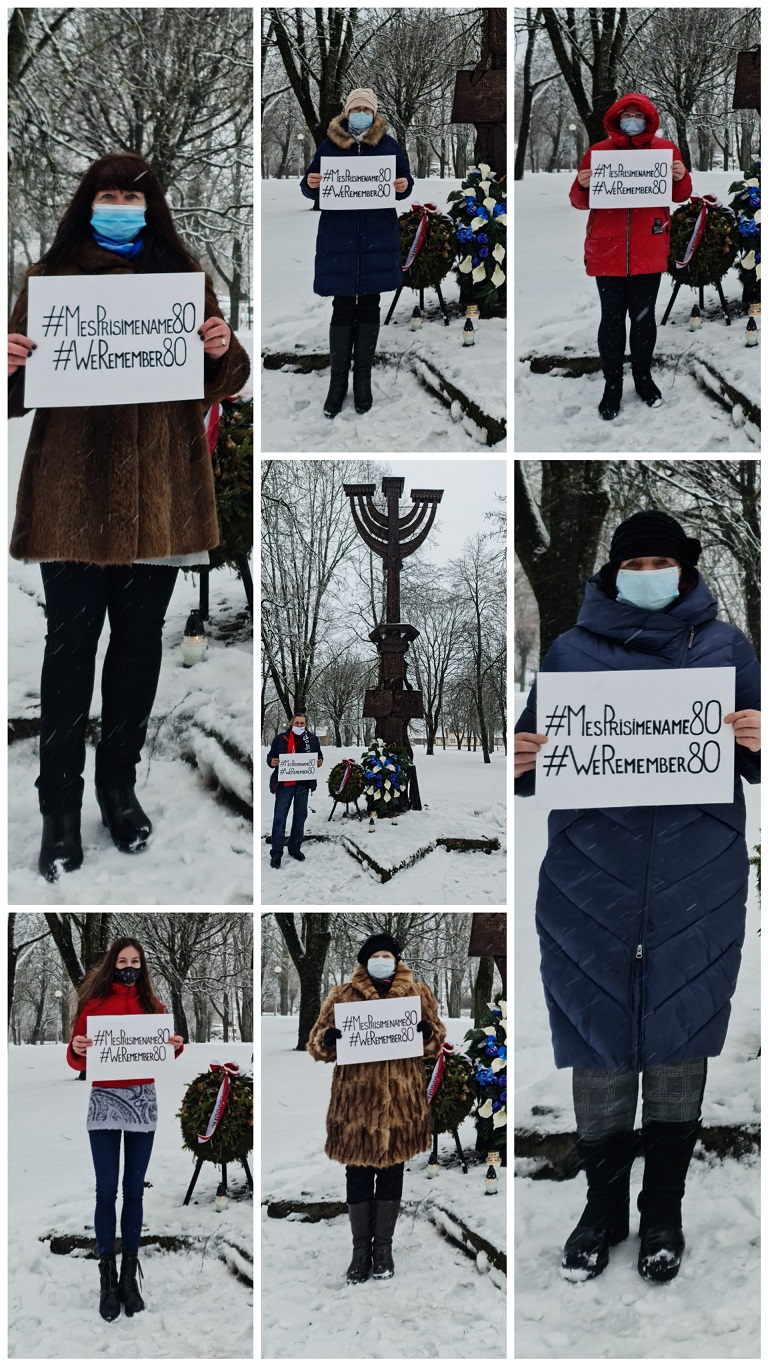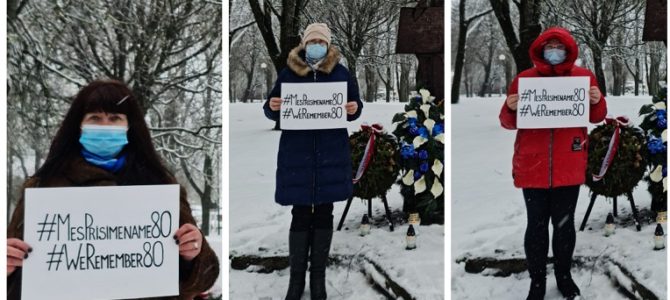by Nadežda Spiridonovienė, historian, museum specialist, Nalšia Museum
Lithuania along with the United Nations marks Holocaust Remembrance Day on January 27. Only by preserving the memory of the victims of the Holocaust can we create a safe future for humanity, the kind in which no anti-Semitism, racial, ethnic and religious hatred and discrimination would remain.
We remember the tragedy of the extermination of 6 million European Jews on International Holocaust Remembrance Day.
What happened to people during the Holocaust? What happened in Švenčionys where Lithuanians, Jews, Tartars, Ukrainians, Poles, Russians and other peoples lived together? Where within a territory of a few kilometers people prayed at Catholic church, five synagogues, the Orthodox church and other houses of prayer? What happened 80 years ago to people if there was such a catastrophe, and what can the younger generation do today to insure it never happens again?
“When we gather annually by the statue to commemorate the victims, we see the levy made of the fill of murdered Jews. A large birch tree grew here for several decades after the Holocaust, a year ago it was alive, but last year it was cut down. The tree didn’t endure, it broke. The Nazis and their local collaborators smashed the heads of children on this tree to save ammunition. They grabbed a child by his feet and smashed him into the tree… There are very many places such as this in Lithuania. We must remember and come to commemorate those who were brutally murdered….” (survivor’s testimony)
It’s important to learn the lessons of history and to take responsibility for the Lithuania of today.
The mass murder of Jews took place throughout Europe. Politicians of Nazi Germany planned this, seeking to create living space for Germans in annexed countries of the East. The rabid anti-Semitic propaganda of World War II was supposed to cause antipathy towards Jews. Lithuania was one of the first countries where the Nazis held Jews in ghettos and shot them near their home towns. Today there are about 900 Lithuanian citizens who have been recognized and awarded the most-honored Righteous among the Nations medal, although there were more rescuers than this.
The Jews who survived and their children were only able to begin looking for their rescuers living in Lithuania after independence and to provide testimonies about their rescue. There are people living in the Švenčionys region who rescued Jews. Town residents strove to provide food to the Jews held in the ghetto and so contribute to their survival. Fate was unkind to this people in the Švenčionys region. About eight thousand peaceful residents lie buried at the mass shooting sites, killed only because their ethnicity was Jewish.
The historian Arūnas Bubnys says in order to understand the Holocaust as the history of fellow Lithuanian citizens, “the efforts of historians, pedagogues, politicians and media workers must be brought together.” The Holocaust needs to be condemned and be an event which is never forgotten.
The Nalšia Museum in its history section has devoted a significant part of that exhibit to showing documents on the tragic events from 1941 to 1943 and personal items owned by Jews. Museum workers took part in the international Holocaust victim commemoration campaign #MesPrisimename/#WeRemember taking photographs of themselves at the Menorah statue commemorating ghetto victims in the Švenčionys city park, and Švenčionys Regional Jewish Community chairman Moše Šapiro spoke about the horror of the Holocaust which we should never forget, and the story of the message of hope provided by the rescuers, in a short video report which was shared on social media.

Full article in Lithuanian here.


